
By Judy Ameline, Judy Chyung, and Emily Thompson
We hope you enjoy this reading list, curated by librarians at the TDSB Professional Library in the Library Learning Resources and Global Education Department of the Toronto District School Board.
Links to the TDSB Professional Library Catalogue have been provided for informational purposes, but the items are accessible to TDSB staff only.
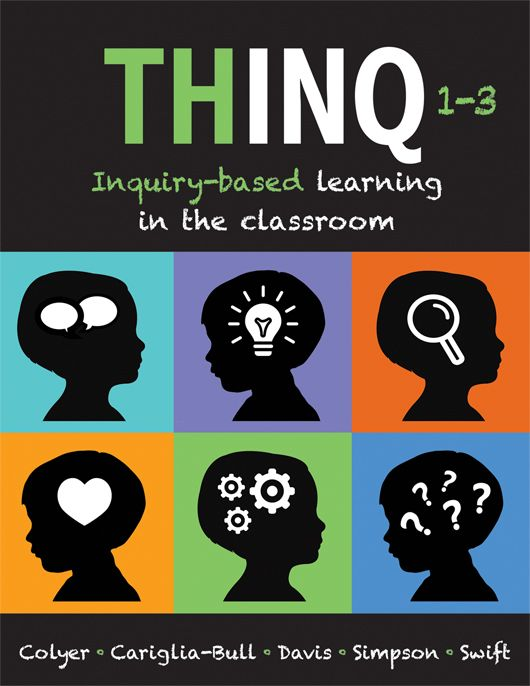
Colyer, J, Cariglia-Bull, T., Davis, L., Simpson, S., & Swift, M. (2024). THINQ grades 1–3: inquiry-based learning in the classroom. Solution Tree. eBook
This volume within the THINQ series is specifically designed for primary grades and draws upon the comprehensive guide, IQ: A Practical Guide to Inquiry-Based Learning. The THINQ series explores the fundamental principles that support inquiry-based learning across all grade levels and subjects. Each book in the series is carefully tailored to meet the unique needs and characteristics of educators and learners at different stages. This particular book offers practical guidance to teachers of grades 1-3 on how to effectively integrate inquiry-based learning instruction and assessment into their classrooms. This inquiry book guides teachers in fostering an inquisitive mindset in their young learners, inspiring them to become active and engaged learners.

Francis, E.M. (2024). Inquiring minds want to learn: posing good questions to promote student inquiry. Solution Tree. eBook
More than merely wanting to know, inquiring minds want to learn. This is the premise for Erik M. Francis’s book, which begins by probing what makes an inquiring mind: curious, intellectually robust, interested, imaginative, and primed for wonder. This title adeptly covers the ground between questioning (e.g., “good” vs. “bad” questions; how to personalize questions; how questions promote understanding) and inquiry (e.g., types of inquiry; how to “hook” students into inquiry; foundational and deep inquiry). Figures and tables throughout the book provide examples, charts, and more.

Newman, M. (2024). Teaching history today: Applying the triad of inquiry, primary sources, and literacy. Rowman and Littlefield. Print book
This book offers educators practical strategies to make history learning relevant and engaging for students in middle and high school. Recognizing the shift towards more inclusive and culturally relevant history education, the book focuses on key instructional elements: inquiry, primary sources, and literacy. The book emphasizes the importance of these elements in fostering culturally relevant teaching and learning environments. Through a focus on these elements, the book guides teachers in organizing historical content into effective units, teaching skills alongside content, and fostering collaborative learning experiences.
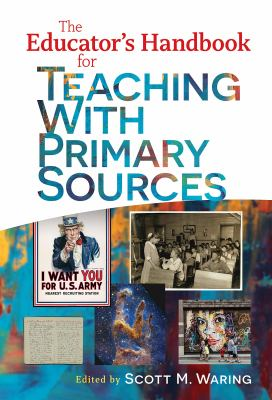
Waring , S.M. (2023). The educator’s handbook for teaching with primary sources. Teachers College Press. eBook
This collection of sixteen essays provides a broad introduction to teaching with primary sources, grouped into four sections: teaching strategies; conducting authentic inquiries; applying tools and concepts, evaluating sources, and using evidence; and emerging technologies. The collection covers a wide range of subjects including social studies, English, math, and science. Most of the sample primary sources used throughout the text are American, however, many of the essays cover big ideas with respect to inquiry that could be readily adapted for a Canadian context (see e.g., Chapter Seven – Inquiry by Design: Unit Planning to Ensure Authentic Use of Primary Sources).
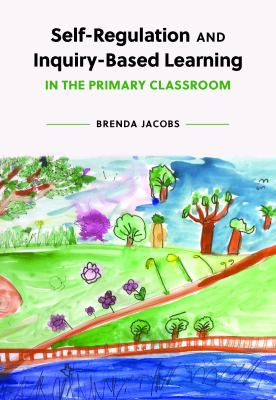
Jacobs, B. (2022). Self-regulation and inquiry-based learning in the primary classroom. Canadian Scholars. eBook
This book explores the critical role of self-regulation in early childhood learning. It demonstrates how inquiry-based learning can foster self-regulated learning, empowering children to become independent learners. Through real-world classroom examples, the author illustrates how self-regulation and inquiry-based learning are interconnected in four key ways: 1) children develop self-regulation during inquiry-based learning similarly to how they do during play; 2) teachers can use scaffolding strategies to support this development; 3) inquiry-based learning promotes positive emotions essential for social and emotional learning; and 4) children use oral language as a self-regulatory tool during inquiry-based learning. These insights are applied to the four parts of emergent curriculum inquiry: inquiry design, classroom environment, conversation, and documentation. This book shows that by understanding these connections, teachers can effectively implement strategies to nurture self-regulated learning in their young students.
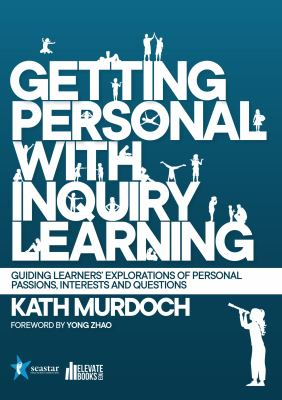
Murdoch, K. (2022). Getting personal with inquiry learning: guiding learners’ explorations of personal passions, interests, and questions. Elevate Books Edu. eBook
In this book, Kath Murdoch champions inquiry learning led by students’ passions, personal interests, and key questions. Part 1 lays the groundwork, including an exploration of what personal inquiry entails: it’s all “about the needs, interests and passions of each learner being met through opportunities for them to inquire” (20). Part 2 includes checklists, charts, models, and frameworks to shape the inquiry journey. Part 3 supports those already on the journey with helpful hints for curating learning spaces and big ideas, along with planning documents and prompts. Part 4 helps educators manage the process, with reference lists of books and digital resources.

MacKenzie, T. (2021). Inquiry mindset: Scaffolding a partnership for equity and agency in learning. Elevate Books Edu. eBook
As the concluding installment in the Trevor Mackenzie inquiry mindset book series, this book focuses on the application of inquiry-based learning to student assessment practices. It emphasizes that in inquiry-driven classrooms, learning is centred around students’ interests and curiosity, empowering them to take ownership of their education and achieve their goals. In this book, the author proposes practical strategies for teachers to collaborate with students in co-designing assessments and making the assessment process more transparent. This collaborative approach aims to foster a stronger sense of belonging and ownership among students, enhancing their overall learning experience.
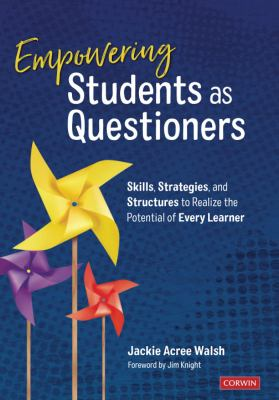
Walsh, J.A. (2021). Empowering students as questioners: Skills, strategies, and structures to realize the potential of every learner. Corwin. eBook
In this second edition, Jackie Acree Walsh makes the case that student questions are a means to transform learning – for both students and educators alike. Walsh begins by describing how to shift classroom culture: away from a teacher-centric model, towards one where educators cultivate student questioning as a means to spark learning and thinking. The next chapters are dedicated to four types of questions: self, academic, exploratory, and dialogic. Walsh notes that these four types feed fluidly into one another, creating a holistic approach for students to become empowered questioners, engaging with and inquiring about the world around them.
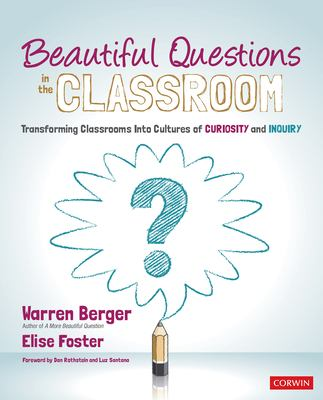
Berger, W., & Foster, E. (2020). Beautiful questions in the classroom: Transforming classrooms into cultures of curiosity and inquiry. Corwin. eBook
This book emphasizes the significance of questioning as a fundamental tool for critical thinking and fostering innovation. The author argues that asking good questions is essential for students preparing for the modern workplace and life. The book offers practical strategies for teachers to cultivate a classroom environment where questioning is encouraged and students are guided to ask more insightful questions. It addresses common barriers to questioning and provides solutions to overcome them, ultimately empowering students to become more critical thinkers and problem-solvers.
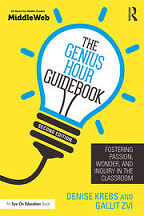
Krebs, D., & Zvi, G. (2020). The genius hour guidebook: Fostering passion, wonder, and inquiry in the classroom. Routledge. eBook
For more than a decade, educators all over the world have been implementing Genius Hour (also known as Adventure Learning, 20% Time, Curiosity Time, among many other variants). Genius Hour gives students space and time to find and follow their passions: to take charge of their own learning, to get excited and curious about things they care about, and to develop 21st century skills. This guidebook charts a clear path for educators to implement Genius Hour: from preparation and launch, to managing and making learning visible, to assessment and feedback. Appendices include FAQs, lesson plans, resources, and a reading list.

Judy Ameline is a librarian at the Toronto District School Board Professional Library with almost 30 years experience providing reference service. She is passionate about providing TDSB teachers and leaders access to current, cutting edge information in the field of education to support their professional development needs. Check out the Library’s Pinterest Boards and follow her on Twitter @AmelineJudy

Judy Chyung has extensive experience providing Education Reference and Online Services to the educators and leaders of Toronto District School Board at the TDSB Professional Library. She enjoys reading and learning about the trends in education literature, and assisting TDSB educators with their information needs whether for their classroom support or for their professional learning. One of the initiatives that she leads is the curated Resource Guides for Heritage Months celebrated by TDSB. Currently she is deeply involved in developing Subject Guides to support TDSB educators and students with their curriculum resource needs. These Subject Guides can be found in the TDSB Virtual Library under the FIND tab.

Emily Thompson is a Reference and Digital Resources Librarian with the Toronto District School Board Professional Library. Prior to joining the TDSB this year, she spent nearly a decade in public librarianship and is passionate about early literacy. She is excited to be a part of the TDSB Professional Library team, connecting users of all ages with digital resources through the Virtual Library. Follow the TDSB Virtual Library on Twitter: @tdsbVL